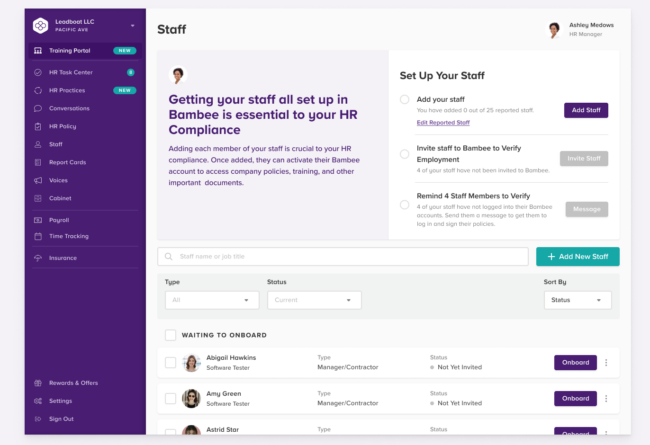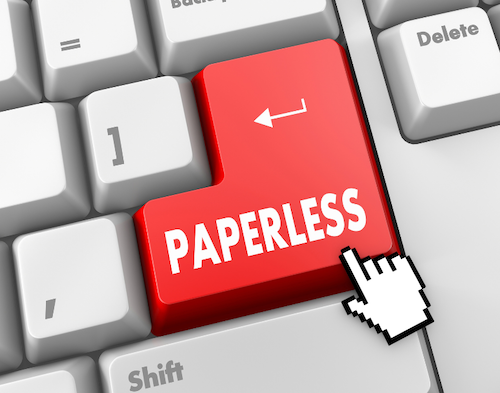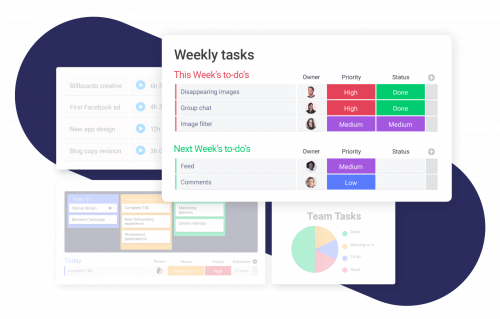10 Innovative Cost Saving Ideas for Companies to Reduce Overhead & Lower Business Expenses in 2022

In business, you either need to boost profits or cut costs to keep up with inflation.
While the first may seem preferable, cutting your costs and reducing expenses can lead to major savings and leave you with a more streamlined, efficient business.
According to the Wall Street Journal, inflation is at a 40-year high, causing businesses across the country to search for new ways to adapt and survive in this increasingly expensive landscape. While many companies have turned to raising prices, this may lead to pushback from “weary consumers.”
“While companies implemented emergency, across-the-board expense cuts in the early days of the pandemic, they are now taking less drastic measures aimed at providing longer-term savings.” -Wall Street Journal
Click To Tweet
If you’re looking to make a serious reduction to your overhead and implement a long-term change to your business expenses, read on. We’ve got ten innovative ways you can start saving.
10 Cost-Cutting Ideas For Businesses To Reduce Overhead Expenses
See if any of these cost-cutting ideas to reduce overhead expenses can benefit your business.
1) Apply for the ERC

While lockdown is over in the United States, many businesses are still feeling the impact of COVID-19. Whether they had to shut their doors, incurred additional costs due to the virus, or had to take on debt to keep their staff, plenty of businesses have been negatively impacted by COVID-19.
If you’d like to keep your business strong while finding ways to save money, you can apply for Employee Retention Credit (ERC) from the IRS. The ERC is a refundable tax credit to help businesses that were able to keep their employees through the pandemic. This tax credit allows you to save money without trimming employees or cutting corners.
Tip: Take this 60 second quiz to see if you qualify for the ERTC today!
2) Review your subscriptions

In a modern landscape where the subscription-based model is everywhere, it’s easy to rack up a long list of monthly or yearly subscriptions. At home, you might find yourself doing some subscription-based mental math—do I really watch enough Netflix to justify $16 a month? If you want to reduce overhead and save money, you should ask the same questions about your business-related subscriptions.
Across office management tools, HR software tools, and employee engagement apps, you may be surprised by how much you’re spending a month on subscription services. The question you need to ask yourself is: which of these do I really need? While your business might grind to a halt without Slack, maybe you can say goodbye to your HR software. Whatever you’re willing to reduce is money back in your pocket.
Tip: You don’t always have to completely say goodbye to an online tool—see if there are more cost-effective plans that still match your needs.
3) Outsource tasks and processes

Courtesy of Bambee
There are some parts of running a business that, no matter what, will feel like work. There’s paperwork to fill out, payroll to run and a million other Is that need dotting and Ts that need crossing. The thing is, these not-so-fun activities are often extremely time-consuming. That’s more man-hours and more money.
You should consider outsourcing some of these tasks and processes, so your team can focus on the real work that your company does. Whether you’re a small business, an established company, or a start-up, outsourcing your HR or other parts of your business can make an immediate impact on your bottom line.
Tip: See if a workplace tool like Bambee can help streamline your HR needs.
4) Use freelancers

Some projects need a special touch that your current full-time team isn’t quite right for. Or, you might have a full-time design team that only has enough work to keep them occupied half the time. For these types of situations, you should see how freelancers can help.
Freelancers are hourly employees who join your team on a project-by-project basis. Since freelancers are only on the team for a brief time, they do not receive benefits, which reduces costs. Plus, choosing a freelancer allows you to hire the exact right person for a specific role.
Tip: Review your upcoming projects and see where a freelancer would be the most effective, efficient way to get the work done.
5) Simplify your employee appreciation program

Creating a culture of appreciation and offering plenty of morale boosters in your office is crucial to the happiness of your employees and the health of your office. A team of content employees improves productivity and lowers employee turnover, which is important for your office’s success. The problem is, whether you run your employee appreciation program yourself or through different engagement tools, this can become a costly expense.
That doesn’t mean you need to get rid of your employee appreciation program, however. Instead, find ways to more efficiently show your employees you care. A great way to do this is by consolidating all of your gift-giving into one place. Platforms like Caroo can help you run your entire employee appreciation program without destroying your budget.
Tip: Focus on a program that utilizes a healthy balance of recognition strategies. Employee shoutouts, company acknowledgment and gifts and rewards can be used to craft an effective recognition program.
6) Go paperless

Some of the most basic office supplies can be the most costly. Running aspects of your company on paper can cost thousands of dollars, from paying a supplier, the cost of the paper itself, and potential mailing costs. While paper may feel like an unavoidable cost of running a business, it doesn’t have to be.
Going paperless will not only streamline and modernize your business—it’ll also reduce your business expenses. Examine the different departments that use paper and decide which ones need a physical copy and which ones can go completely digital. You may be surprised how many functions can be moved completely online.
Tip: See if any HR tools can replace your paper usage. This will lessen your carbon footprint while saving you money.
7) Leverage automation

You’ve got time cards to sign, bills to pay, forms to fill out, recruiting to do, a crowded inbox to weed through, and calendar invites that need sending… sometimes your to-do list can look endless. These tasks take up your team’s time, wasting hours that could be better spent. Thankfully, with automation, it’s easy to eliminate many of the most tedious tasks associated with the modern office.
There are tons of online collaboration tools and HR outsourcing software that can bring added efficiency to your office. Payroll, bill paying, email response, customer support, recruitment and so much more can be done with automation. This eliminates time spent on busy work, which allows you to focus your workforce on what really matters. Plus, these software platforms offer plenty of other benefits, like improved communication, better recognition, and upgraded workflow management.
Tip: Use the collaboration and automation tool monday.com to organize your time while cutting down on time-consuming busy work.
8) Create department budgets

As a company grows, it can become tough to keep a firm grip on spending and cash flow. There are different departments with different needs, teams that need to grow and some that need to shrink, and special equipment that is crucial for one group but worthless to another. Considering all this, a one-size-fits-all budget just won’t work.
To combat overspending and help lower your business expenses, you need to make specific department budgets. With a budget to work against, each department will be able to strive toward their yearly goals while having a solid handle on how much they can spend to reach them.
Tip: Work with each team individually to help develop their personal budget. While more time-consuming, this will give you the most accurate number while giving you a chance to interface with each team or your chief of staff.
9) Encourage remote work

There are some undeniable benefits to going into the office. Everyone can meet face-to-face, it’s easy to schedule a last-minute meeting, and when someone has a birthday there’s cake in the break room. However, renting and stocking an office is expensive. One way to reduce your overhead is to update your work-from-home policy and encourage your team to work remotely!
If your team members work from home, that allows for a smaller office and fewer supplies. If you make the company fully remote, that’s no rent payments at all! Plus, many workers prefer working from home, so this will make both you and your employees happy.
Tip: Incentivize working from home by making sure your remote employees have the same great perks and benefits as the in-office employees.
10) Learn from your team

While you may strive to know your office and understand its workers and rhythms, it is impossible to have a grasp on every aspect of a company. There are too many people controlling too many moving parts across too many hours of work to ever really have the whole picture to yourself. Thankfully, you don’t have to. To reduce expenses, you just need to learn from your team.
Prioritizing employee feedback gives you a chance to examine, team-by-team and role-by-role, where the inefficiencies lie. Does one person waste time on work that can be automated? Does a team have equipment that it never uses? By leaning into the experience and opinion of your team, you can reduce expenses and get your employees working on high-value work that justifies the time commitment.
Tip: Use professional employer organizations (PEOs) to help you collect employee feedback and learn from your team.
Business Cost Reduction Tips And Questions

If you’ve got questions about reducing overhead and lowering your business costs, we’re here to help. Here are answers to common business cost reduction questions.
Q: How can a company reduce costs?
- A: There are plenty of ways for companies to reduce cost—it’s all about looking at your current spending and business models and finding where you can make changes. That can mean cutting back on services and supplies or being more precise with employee time. Changes can be large-scale, like going fully remote, or smaller scale, like reducing paper usage.
Q: What are some common cost-saving strategies?
- A: The most common cost-saving strategy is reducing overhead, which lessens your spending. This can come from many directions, including eliminating time-wasting tasks to free up time or rethinking your spending on office space or subscriptions. You can also find grants and tax deductions to help save.
Q: How can a business reduce fixed costs?
- A: A business can reduce fixed costs by taking the time to examine and evaluate the usefulness and necessity of their current fixed costs. Ask yourself the importance of your office size or how much you spend on certain departments or programs. Where there’s a lack of necessity, you can trim your fixed costs and lessen expenses going forward.
Q: What is the biggest expense for a company?
- A: Most companies’ biggest expenses include their staff, office, equipment, and inventory (although some of these might not apply, depending on the type of company). To find ways to reduce your costs, look at these different expenses and see how you can become more efficient. For example, reducing your office space or leasing out part of your offices is a great way to lower your expenses.
Q: What are some cost-saving ideas for large companies?
- A: The process of cost-saving for a large company starts with evaluating your different departments and spending to see where money can be saved. This includes adding automation when possible and reducing spending on unnecessary supplies, equipment and subscriptions. Turning to contractors for specific roles can also be a cost-saving method.
Q: How can my small business reduce overhead costs?
- A: Small businesses can reduce their overhead costs by using the mentality that every dollar counts. Examine your spending closely and find any place, no matter how small it seems, where you can change your spending habits—whether that means using a lower tier of a subscription plan, rethinking your office space, or simplifying your employee engagement programs. Don’t think ‘How can I eliminate this?’ Instead, think ‘How can I make this more cost-effective?’
Q: What are the best cost-saving initiatives in the workplace?
- A: The best cost-saving initiatives in the workplace will change from company to company—it all depends on your needs and where your spending can be effectively reduced. Look into what tasks can be automated, what supplies can be reduced or eliminated, and if you qualify for any grants or tax cuts. The best place to start is to determine what is essential to the success of your business and what is not.
Q: How do companies implement cost-saving initiatives?
- A: Companies implement cost-saving initiatives by examining what initiatives will be most useful for the success of their company and then take the steps to begin them. This can include applying for grants, canceling subscriptions, enrolling in an automation service, or any number of other first steps toward saving.
The post 10 Innovative Cost Saving Ideas for Companies to Reduce Overhead & Lower Business Expenses in 2022 appeared first on SnackNation.